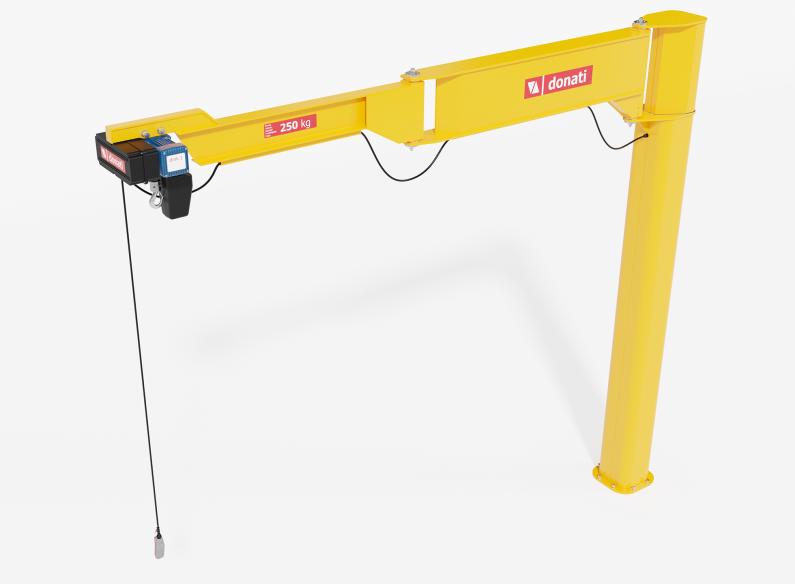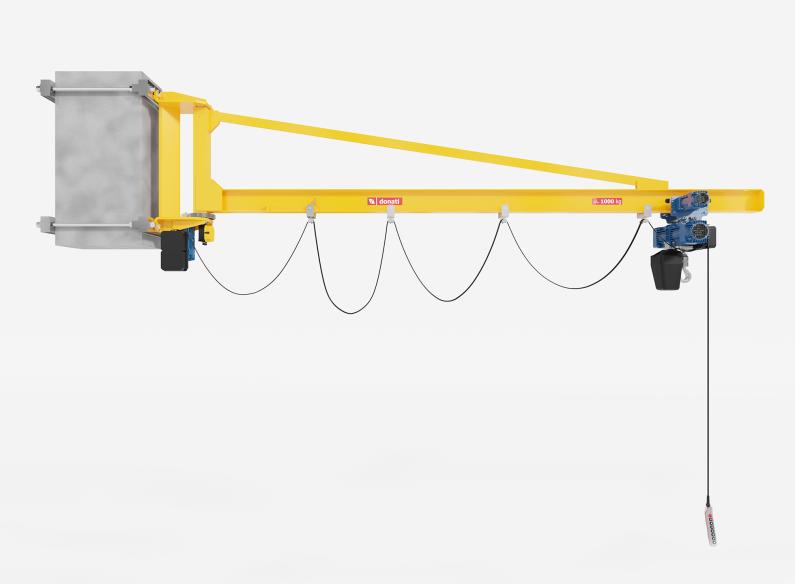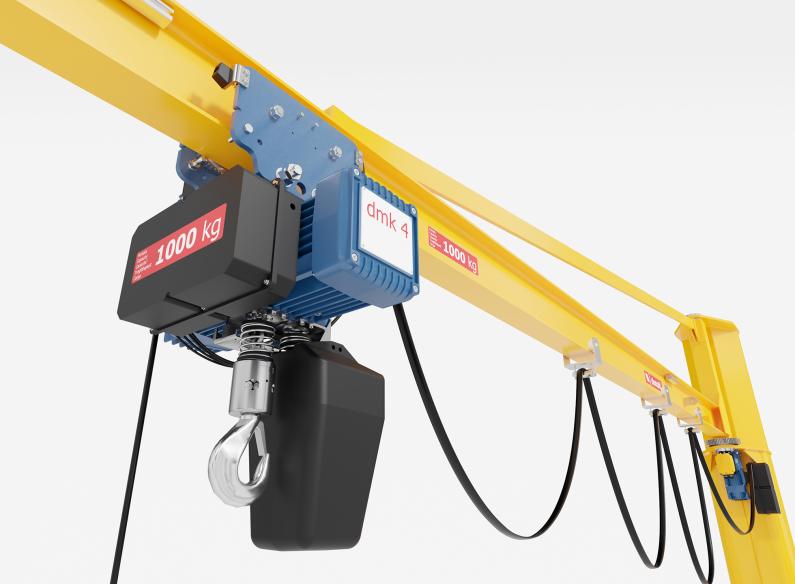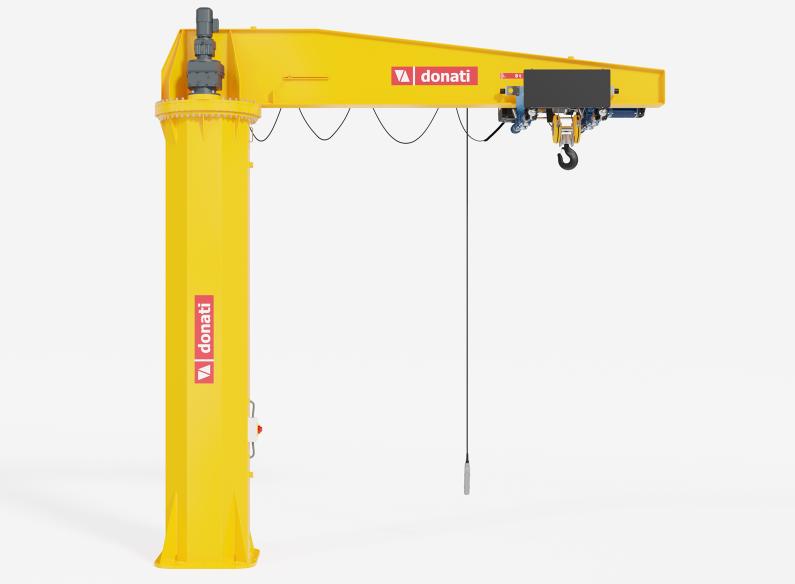Jib cranes: types and characteristics
Donati Sollevamenti S.r.l. supplies a wide range of completely reliable, technically advanced manual and electric jib cranes with an excellent price-performance ratio.
Jib cranes are the ideal system to lift heavy loads on forecourts and open spaces or in confined spaces with low ceilings and fixed or moving obstacles. They can be operated manually or electrically and the load bearing capacity ranges from a minimum of 63 kg to a maximum of 10,000 kg.
With these cranes, loads can be moved:
- vertically using a chain or rope hoist hook;
- horizontally using an electric or manual hoist trolley that runs along the crane's boom;
- in the area around the pillar or the constraint axis of the boom around 360° or less in the presence of fixed obstacles.
Types of jib cranes
Jib cranes can be classified as follows:
- pillar jib cranes, comprising a bearing column or pillar and a rigid boom able to rotate around its axis or around that of the column. The rotation can be motor-driven or manual. They offer the advantage of easy and rapid installation and have small dimensions;
- cantilever jib cranes, comprising a boom mounted with a bench support structure on existing structures in the shed such as walls or pillars.
- cranes with pallet fork, that are not stably anchored to the floor or to vertical supports but rest on a palletised foundation of sheet steel filled with cement, or on a steel ballast. This model is chosen:
- for economic reasons, when it is decided to use just one crane that can be moved around according to the needs instead of installing one at every work station;
- for technical reasons, when it’s not possible to dig up the floor because there are pipes or cables and the walls or columns do not offer the necessary support.
Sub-categories based on the type of boom and the rotation method can be added to this classification.
The boom can be:
- channel profile, the least expensive and simplest to design and mount. In this type of crane the hoist trolley slides inside the boom profile. The action can only be manual and the maximum load bearing capacity is 1,000 kg;
- beam with tie rod, with boom reinforced with a support tie rod that increases the load bearing capacity to 2,000 kg. The trolley slides along the lower wing of the boom and can be operated either manually or electrically;
- cantilever beam, where the boom is made of a double T laminated profile beam; the trolley slides on its lower wing. Also in this case the maximum load bearing weight is 2,000 kg but the absence of a tie rod means that both the space at the top of the building and the entire travel of the hook can be exploited. The hoist can be operated both manually and electrically.
- articulated, for extremely small environments and with obstacles that prevent normal manoeuvres with a rigid boom. The articulated boom comprises two elements coupled to each other with a pin;
- retractable, comprising two booms: the first is connected to the column or support and allows rotation while the second slides below the first with manual or electric travel.
The boom can rotate by means of:
- a joint that connects the boom to the column or load bearing wall. This solution allows a maximum rotation of 270°;
- a circular rail on the column on which the rolling bearings mounted on the boom slide and allow rotation of 360°;
- a fifth wheel; that is, an axial bearing mounted on the column that allows rotation of 360°.
Safe assembly of pillar jib cranes
Pillar jib cranes are chosen when it is not possible or advisable to use an existing load-bearing structure such as a pillar or wall. Two alternative methods are generally used to anchor the pillar to the floor:
- a foundation frame with anchor bolts immersed in a concrete base. This method entails digging up the flooring;
- a base anchored to the floor using chemical anchors that do not require the flooring to be dug up.
Safe assembly of cantilever jib cranes
Cantilever jib cranes allow savings in manufacturing costs and reduced dimension of the load bearing columns. They are installed on a vertical reinforced concrete support in two ways:
- by means of pinning, an anchoring system that uses threaded bars, counter supports and nuts and can be used on reinforced concrete pillars, iron columns and load-bearing walls;
- with chemical anchors, only on reinforced concrete columns.
Electrical connections
The electrical connections and earthing of the motors for the movement of the hook, hoist and boom must be carried out by a certified installer who will issue a certificate declaring the fitness of the plant.





